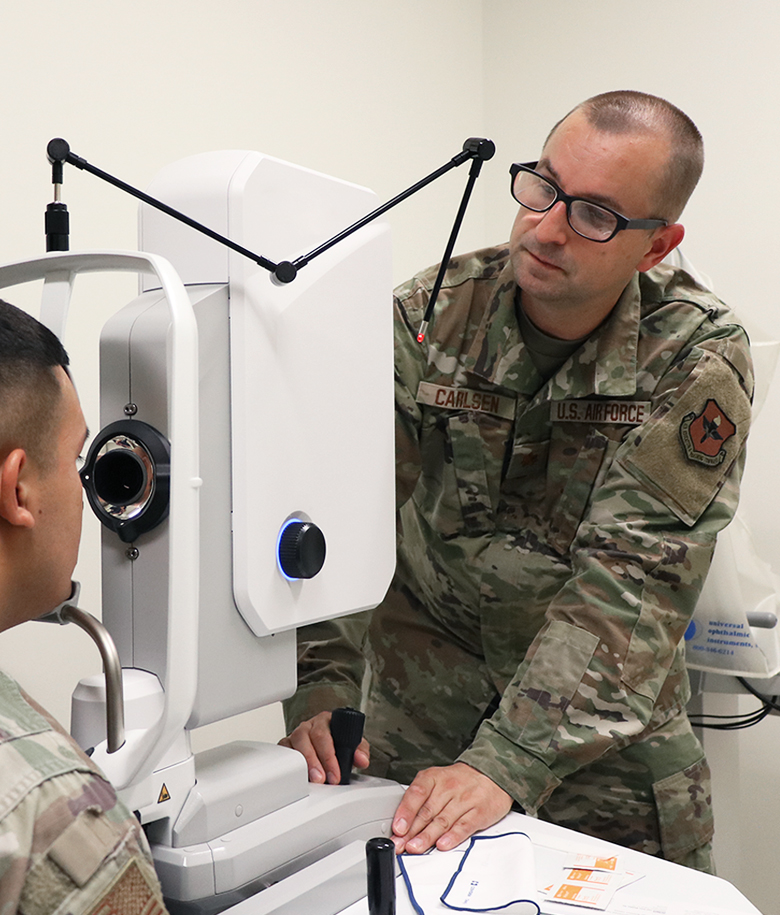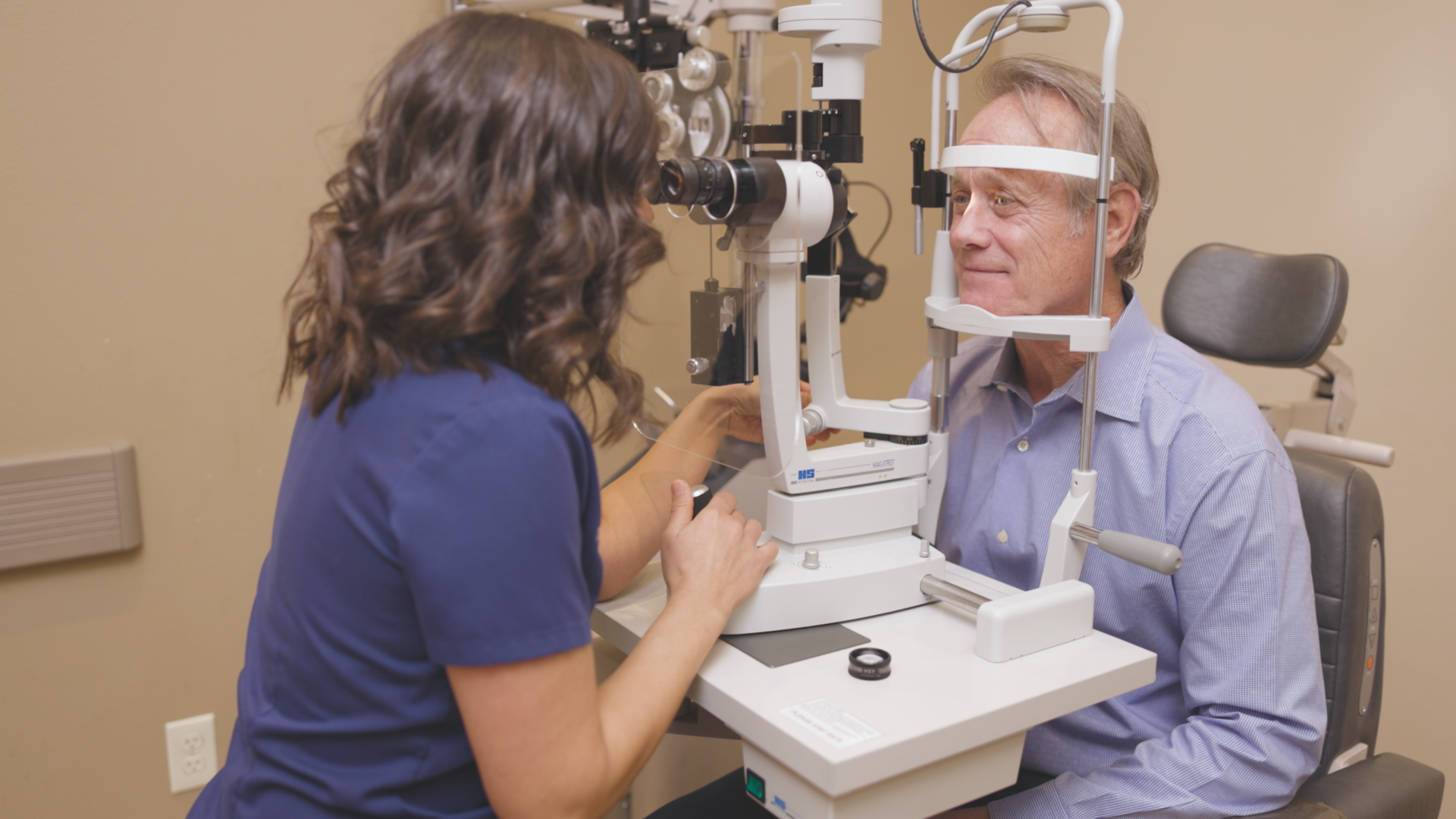Checking Out the current Technological Improvements in Optometry and What They Mean for Optometrists
In the ever-evolving area of optometry, current technological advancements are reshaping how specialists approach eye treatment. From the accuracy of Optical Coherence Tomography to the nuanced insights used by AI-driven analysis tools, these innovations are setting new criteria in person analysis and therapy. Teleoptometry is positioned to redefine access, guaranteeing that proficiency transcends geographical restrictions. As these innovations penetrate the technique, optometrists are confronted with the difficulty of accepting these devices to enhance patient results. Yet, the inquiry remains: just how will these technical changes redefine the functions and obligations within the profession?
Technologies in Diagnostic Tools
Progressing the area of optometry, advancements in diagnostic tools have changed the way eye treatment experts evaluate and detect visual disabilities and ocular problems. The previous years has actually seen significant technical developments, enabling even more thorough and accurate evaluations.
An additional trick advancement is the introduction of advanced corneal topography systems, which map the surface curvature of the cornea with precision. These tools are especially useful for fitting contact lenses and identifying corneal problems. Electronic retinal imaging has actually transformed standard ophthalmoscopy, supplying thorough, scenic sights of the retina that assist in complete aesthetic exams.
The advancement of wavefront aberrometry has actually likewise been crucial, making it possible for the evaluation of refractive errors with unmatched precision (Opticore Optometry). This technology aids in personalizing corrective lenses and boosting surgical results for refractive surgical treatments. Jointly, these analysis improvements equip eye doctors to deliver remarkable patient treatment, guaranteeing very early treatment and tailored treatment methods, eventually enhancing visual health outcomes
AI in Individual Management
Structure on the foundation of sophisticated analysis tools, the consolidation of man-made knowledge (AI) in patient monitoring represents a transformative leap for optometry. AI systems are progressively utilized to improve efficiency, precision, and customization in person care.
In addition, AI-driven platforms help with structured person communications and administrative processes. Automated scheduling, digital appointments, and customized follow-up strategies not just enhance client fulfillment but additionally enhance time administration for practitioners. These systems can triage individuals based on the urgency of their conditions, ensuring that those in crucial demand receive prompt interest.
Furthermore, AI enhances decision-making by providing eye doctors with evidence-based referrals and therapy pathways. By incorporating information from digital wellness documents, AI tools use understandings that notify professional choices, lowering the danger of errors and improving person outcomes. As AI proceeds to develop, its function in client management will likely expand, improving the landscape of optometric treatment.
Breakthroughs in Retinal Imaging
In the realm of optometry, retinal imaging has observed remarkable technological improvements that are boosting diagnostic capabilities and client treatment. Developments such as Optical Comprehensibility Tomography (OCT) and fundus photography have actually revolutionized just how eye doctors picture and examine the retina.
Improved imaging methods like OCT angiography are more refining diagnostic precision. This non-invasive strategy maps blood circulation in the retina, supplying important understandings into vascular health without the need for color injections. In addition, adaptive optics innovation is being incorporated into retinal imaging systems to correct ocular aberrations, supplying unmatched photo quality. Such developments facilitate the identification of minute retinal adjustments that might signify condition development.
In addition, improvements in expert system are augmenting retinal imaging by enabling automated analysis of huge datasets. These systems aid eye doctors in determining patterns indicative of pathology, thus boosting diagnostic precision and effectiveness. Jointly, these innovations are changing retinal imaging right into a foundation of modern-day eye care, enhancing end results and increasing healing possibilities.
Teleoptometry's Growing Duty
Teleoptometry is progressively coming to be an important element of eye care, driven by innovations in digital interaction and analysis tools. This is especially valuable in rural check my source and underserved areas where access to specialized eye treatment is usually limited.
The combination of fabricated knowledge (AI) more enhances teleoptometry, making it possible for the analysis of visual data and aiding in the discovery of ocular problems such as glaucoma and diabetic retinopathy. AI-powered algorithms can swiftly interpret intricate imaging information, supplying optometrists with useful insights that boost professional decision-making.
Additionally, teleoptometry supports continuity of treatment through smooth combination with electronic health records (EHRs), allowing eye doctors to preserve thorough individual histories. When seeking advice from with different professionals., this guarantees that individuals get regular and individualized care even.
In spite of these article benefits, challenges stay, consisting of making certain information safety and security and handling client assumptions. However, teleoptometry represents a considerable stride towards even more easily accessible, efficient, and patient-centered eye treatment. As innovation develops, its function is positioned to expand better.

Future Trends in Eye Treatment
A myriad of ingenious trends is established to improve the future of eye care, driven by technological advancements and the evolving requirements of clients. One significant fad is the integration of man-made knowledge (AI) in diagnostics, which assures to enhance the accuracy and effectiveness of eye assessments. AI formulas can analyze vast quantities of data from retinal pictures, possibly finding problems like diabetic person retinopathy and glaucoma earlier than conventional techniques.
In addition, customized medicine is getting grip in optometry, with hereditary testing notifying personalized treatment strategies. This method intends to maximize person end results by customizing interventions to specific hereditary accounts. Wearable technology, such as smart call lenses, is likewise coming read this article up, supplying real-time tracking of intraocular stress or sugar levels, therefore giving continual insights into eye and systemic wellness.
The fostering of increased fact (AR) and virtual fact (VR) in training and person education and learning is one more arising fad. These modern technologies provide immersive experiences that can boost understanding and skills both for clients and optometrists. As these trends develop, optometrists must stay abreast of technical innovations to supply cutting-edge treatment, making sure enhanced client results and complete satisfaction in the dynamic landscape of eye care.
Final Thought

Jointly, these diagnostic improvements empower eye doctors to deliver remarkable patient care, making sure very early intervention and customized treatment strategies, eventually boosting visual wellness outcomes.

As these modern technologies proceed to advance, eye doctors should adapt and include them into technique, eventually optimizing workflow effectiveness and elevating the requirement of eye treatment provided to individuals.